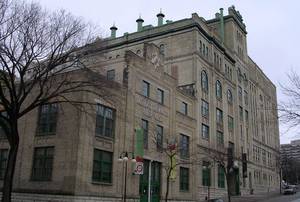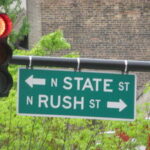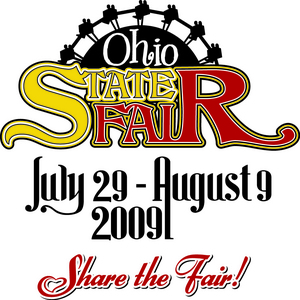Milwaukee’s Miller, Pabst and Schlitz — Laverne & Shirley’s Shotz — gave that city its renown. Madison, with its perennial Top Party School, is famous for its brew pubs and beer-fueled Halloween and Mifflin Street bacchanalias. LaCrosse has a legacy of lagering. The Fox Valley is blessed with sky-brewed waters. Green Bay hosts the nation’s greatest tailgate. And there’s more made in Monroe than cheese.
Beer is the State Treasure and, if it wasn’t for milk, would be the State Beverage. The tradition, craft, and enterprise of beer have been Wisconsin’s cultural, artistic and economic backbone for her entire history.
German immigrants brought centuries-old recipes and brewing knowledge with them when they settled in Wisconsin more than 160 years ago. With easy access to shipping routes, a ready lumber supply for barrels, abundant ice for lagering and storage, plus a passion for good brew, Milwaukeeans have long led the nation in beer production.
One can argue that beer has provided an employment structure for many Wisconsin communities over the last century-and-a-half. Breweries support those who: brew, keg and bottle the beer; keep the brew house clean; mill lumber; make and wash the barrels, bottles, kettles and glassware; ship the beer; and manufacture and install the tuns, coolers, fermenters, wort chillers, bottling equipment, tap lines and other hardware. In 1885, 3,000 people in Milwaukee alone could attribute their livelihoods to beer brewing. Back in the day, ice cutters and cold storage warehouses were vital to proper lagering while neighboring farmers grew grain and hops for the local brew house. And of course we cannot forget our friends across the rail, our faithful bartenders and brewpub owners. Beer is an enterprise that has provided good local jobs for generations and has kept economies fluid.
German beer purity laws, Reinheitsgebot, were enacted in the 16th century and were integral to the quality and consistency of traditional brew styles, commanding strict use of limited ingredients – water, malted barley, and hops (yeast wasn’t truly known or understood until Louis Pasteur three hundred years later). Pilsners and lagers were the signature of each brew house and town. Linked to the old world, those new to Wisconsin were reunited with their heritage through beer.
Wisconsin’s brewing industry has ebbed and flowed with the tides of fortune. By 1848 and statehood, Milwaukee and Mineral Point hosted breweries, supporting local industry, society and agriculture. A Civil War-era hop explosion turned cash crop into catastrophe; despite bumper production and prices in 1865 the harvest and market both went bust by 1867, devastating communities throughout the State. In 1871 Chicago helped make Milwaukee’s beer forever famous when the Great Fire destroyed most of the Windy City’s brewing capacity; Schlitz sent emergency supplies of beer by boat from the Cream City to satisfy the thirst of burned out Chicagoans. By the end of the 19th century Wisconsin breweries fulfilled 25% of the nation’s beer demand, the country’s leader in quantity and quality.
Wisconsin breweries, large and small, have come and mostly gone. In the mid-19th century, nearly every community in Wisconsin had their own brewery. Some towns formed around breweries. By 1860 Milwaukee hosted 48 breweries. After 1920 most couldn’t survive Prohibition despite finding alternative products such as malt syrup, cheese, soft drinks, vinegar and near beer (less than 0.5% alcohol). Others were crushed by large multi-national corporations that could make massive quantities of beer, refrigerate it cheaply and ship it in volume. In 1890 the nation enjoyed nearly 2,000 breweries; by 1977 only 44 remained. In 1910 Wisconsin, 138 breweries were in operation, but only 88 managed to survive through 1937. Even worse, a scant 7 Wisconsin breweries existed in 1982.
The nationwide microbrew revival of the last couple of decades has particularly fueled a statewide resurgence. With its boom in the mid-1980’s, the sudden glut of brewpubs precipitated an industrial contraction by the late 1990’s. Despite this flux, the brewpub phenomenon is not soon disappearing. Better distribution and promotion of boutique brews, and a growing sophistication of beer drinkers – beer isn’t just about NASCAR and bowling anymore – have broadened the market. There has been a shift from quantity to quality.
Local operations with regional distribution are now thriving; bedroom communities such as Mount Horeb, Reedsburg, Lake Mills, New Glarus and Arena sport brew houses. The Madison megalopolis is blessed with 8 breweries, presenting residents and visitors dozens of styles of ales, lagers and pilsners for our tasting pleasure. Madison has a thirst for good fresh beer that local entrepreneurs are wont to slake.
Wisconsin’s history and growth have been inexorably tied to beer for over 160 years; it could be called the foundation of the State. That heritage, industry and ingenuity are propagated and preserved by the new breed of brewer found at a local brew house. The tradition of beer continues to flourish in the Great State of Wisconsin to this day.




